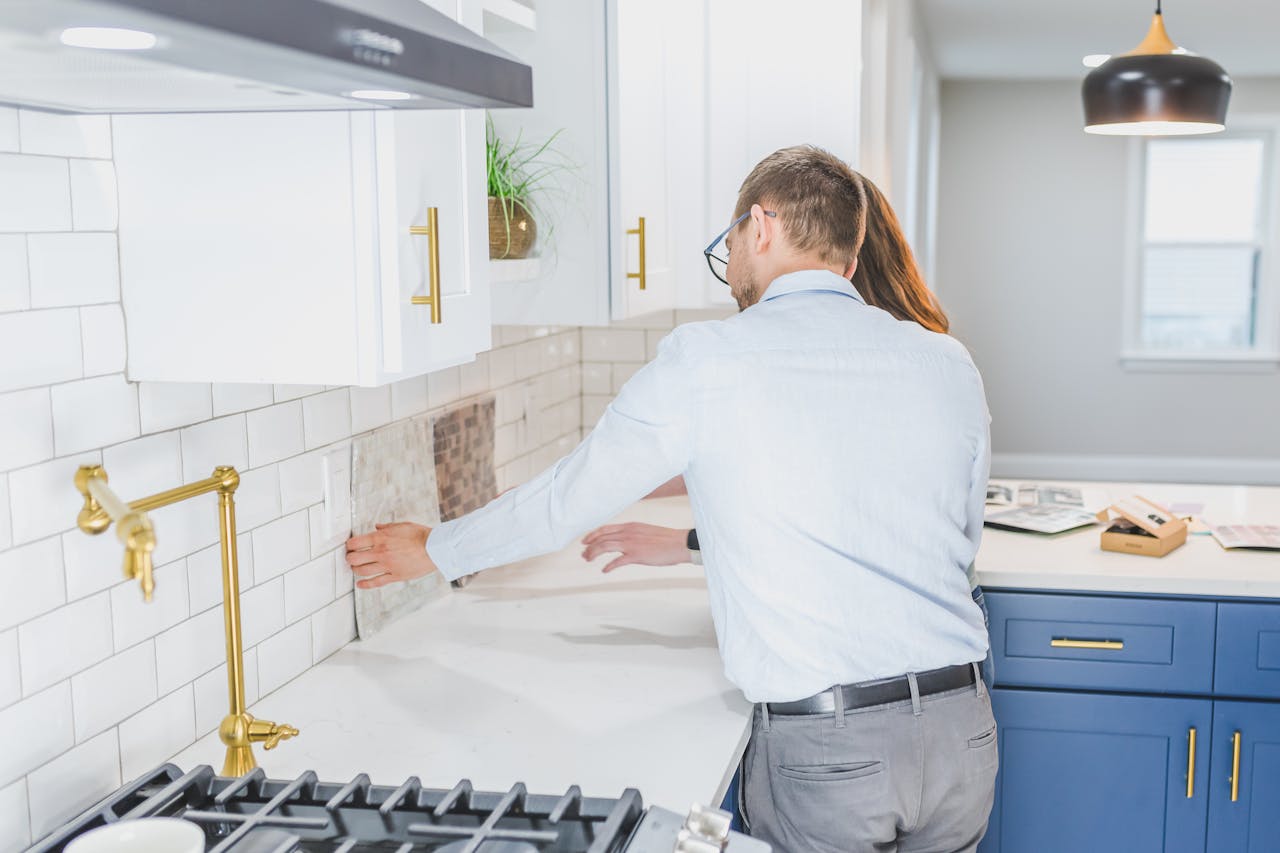When it comes to giving your kitchen a new look, installing a backsplash might be the ideal place to start. The backsplash is not only functional, protecting your walls from water and food spills, but it also adds a significant aesthetic value to your kitchen. From the selection of the tiles to the application of adhesive, every step in the installation process requires careful consideration. If you’re considering this DIY project, you will want to know the best practices for installing a kitchen backsplash. This guidance will lead you through every step, providing you with the necessary knowledge and skills to make your kitchen tiling project a success.
1. Choosing The Right Tiles
Choosing the right tiles for your kitchen backsplash can be overwhelming due to the variety of options available. However, the selection process will be easier if you keep in mind the design and color scheme of your kitchen. It’s also essential to consider the durability and maintenance of the tiles. Ceramic and porcelain tiles, for instance, are known for their durability and easy maintenance.
Additional reading : How does the orientation of your house affect your kitchen’s natural lighting?
Once you have chosen your tiles, take the time to measure the area of your kitchen wall where the backsplash will be installed. This will determine the number of tiles you will need for the installation. Always buy extra tiles to cover any breakages or miscalculations during the installation process.
2. Preparing the Wall for Installation
Proper preparation of the wall where the backsplash will be installed is crucial for a successful tiling project. First, make sure that the wall is clean and free of any grease or dirt. You can use a mild detergent and water to clean the wall. Allow the wall to dry completely before proceeding with the installation.
Additional reading : How can you make a galley kitchen more efficient and spacious?
Next, check the condition of the wall. It should be smooth and flat. If there are any cracks or holes, fill them with caulk and let it dry. If your wall is painted, it’s advisable to lightly sand the area where the tiles will be installed to ensure better adhesion.
3. Applying the Adhesive
Now comes the time to apply the adhesive. First, dry-fit the tiles on the wall and mark their placements. This step minimizes mistakes during the actual installation. Remember to leave space for the grout lines.
Using a notched trowel, apply a thin layer of adhesive to a small section of the wall. Do not cover the entire wall at once as the adhesive may dry out before you get to install the tiles. The adhesive should be applied evenly, with the notches on the trowel helping to create ridges for better tile adhesion.
4. Installing the Tiles
Start installing the tiles from the bottom and work your way up. Press each tile firmly into the adhesive, ensuring it is level with the adjacent tiles. If you encounter an outlet, measure and cut the tile accordingly to fit around it.
Remember to regularly check the levelness and alignment of your tiles as you progress with the installation. Use tile spacers to maintain uniform grout lines between the tiles. Once all the tiles are installed, leave it for 24 hours to allow the adhesive to dry.
5. Applying the Grout
The final step in installing a kitchen backsplash involves applying the grout. Choose a grout color that complements your tiles. Mix the grout with water according to the manufacturer’s instructions until it reaches a paste-like consistency.
Remove the tile spacers and apply the grout using a rubber grout float. Work diagonally across the tiles, forcing the grout into the joints. After letting the grout sit for about 10 minutes, use a damp sponge to clean off the excess grout from the surface of the tiles. Be careful not to pull out the grout from the joints.
Installing a kitchen backsplash might seem like a daunting task, but with the right knowledge and preparation, it can be a rewarding DIY project. By adhering to these best practices, you can ensure that your kitchen backsplash installation goes smoothly, resulting in a beautiful and functional addition to your kitchen.
6. Sealing Your Kitchen Backsplash
The final step before you can rejoice in the completion of your kitchen backsplash project is sealing. Sealing is an essential step that ensures the longevity of your tile backsplash. Depending on your tile type, notably if you’ve opted for natural stone or unglazed ceramic tile, sealing is a must to protect the tile and grout from moisture, stains, and grime.
Start by thoroughly cleaning the backsplash with a mild detergent and wiping it dry. Then, apply the sealer using a small brush or a sealer applicator. Ensure to cover both the tiles and the grout lines in a uniform manner. Some sealers may require two coats, so make sure to follow the manufacturer’s instructions.
Leave the sealer to dry for the recommended time, typically 24 hours. During this time, avoid any water or cooking splashes on the backsplash. Post drying, wipe off any excess sealer from the tile surface. If you’ve opted for a glossy finish sealer, you’ll notice your backsplash tile shine and your kitchen bath in its new gleam.
Sealing not only protects your backsplash but also makes the cleaning process easier, adding to the durability and maintaining the aesthetic appeal of your backsplash.
7. Cleaning and Maintenance of Your Backsplash
Once your kitchen backsplash is installed, it’s crucial to keep it clean and well-maintained to maintain its charm and functionality. Wipe off any spills immediately using a soft cloth or sponge to avoid staining, especially on lighter colored grout. Use a mild detergent, preferably a pH-neutral cleaner, for routine cleaning and avoid abrasive cleaners that can scratch the tile surface.
For stubborn stains, a mixture of baking soda and water applied with a soft brush can be effective. If your backsplash is made of glass or metallic tiles, consider using a glass cleaner for a sparkling finish. For grout, using a grout cleaner regularly can help maintain its original color and prevent discoloration.
Keeping your backsplash clean not only enhances the look of your kitchen but also extends the life of the backsplash. Remember, the key to a long-lasting kitchen backsplash is not just a well-done installation but also regular and proper maintenance.
Conclusion
Installing a kitchen backsplash can indeed be a rewarding DIY project. By following the best practices from selecting the right tiles, preparing the wall, applying the adhesive and grout accurately, to sealing and maintaining your backsplash, you can achieve a beautiful and durable kitchen accent.
No matter the size or design of your kitchen, a well-installed backsplash can greatly enhance its aesthetic appeal, making it a focal point of your home. Remember also that a well-maintained backsplash will serve you for many years, making your time, effort, and investment worthwhile.
Whether you choose a simple subway tile design or a more intricate mosaic tile pattern, the key to a successful kitchen backsplash installation lies in meticulous planning, careful execution, and regular maintenance. So go ahead, take the plunge, and transform your kitchen into a space that reflects your personal style and taste.






